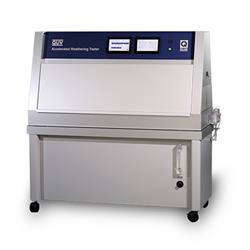What is Accelerated Aging Testing - Why is it Important?
Now that we’ve given you a rough idea of what an AAT is, the rest of this blog will cover why they are important, what industries they apply to, what standards they follow, and finally, how ATEC can help you meet your testing goals. Read on below to learn more.
Why is AAT Important?
Accelerated aging tests play a crucial role in predicting a product’s lifespan under normal usage conditions. This testing method simulates years of wear and environmenta l exposure in a matter of weeks or months, allowing manufacturers to assess potential failures and optimize product design before market release.
l exposure in a matter of weeks or months, allowing manufacturers to assess potential failures and optimize product design before market release.
Wouldn’t it be great to know well in advance that your product design (or the materials you’re using) may be flawed? Ignoring this step could lead to customer complaints and concerns, causing loss of profitability, or even worse, racking up unexpected costs over an extended period.
Accelerated aging testing is essential for manufacturers aiming to produce high-quality, reliable products. Whether for medical devices, aerospace components, electronics, or industrial materials, AAT helps ensure regulatory compliance, reduce failures, and enhance product longevity.Which Industries Require AAT?
There are many industries where complete functionality is crucial. Below are the key industries that rely on accelerated aging testing and how these tests are used within each industry:Medical Device & Pharmaceutical Industry
In the medical industry, AAT ensures medical devices, drug packaging, and pharmaceutical products remain sterile and effective throughout their intended shelf life. Regulatory bodies such as the FDA (U.S.), EMA (Europe), and ISO 11137 require AAT to validate sterilization processes and material degradation.Examples of Tests:
• ASTM F1980 – Accelerated aging of sterile barrier systems for medical packaging.
• ICH Q1A (R2) – Stability testing of pharmaceutical substances and drug products.
Aerospace & Defense Industry
Aerospace and military components must endure extreme environmental conditions, including high altitudes, rapid temperature changes, and vibration stress. AAT standards, such as MIL-STD-810 and MIL-STD 2164, simulate these conditions to ensure compliance.
• Thermal cycling tests to ensure electronic components function in space.
• Vibration testing to assess aircraft components under flight conditions.
• Salt fog and humidity testing for military-grade equipment.
Automotive Industry
Similarly to aircraft (though not as extreme), commercial vehicles are exposed to harsh environmental conditions such as high heat, freezing temperatures, road vibrations, and UV radiation. Automotive components, including batteries, plastics, rubber seals, and electronic systems, must pass AAT to ensure the appropriate durability.Examples of Tests:
• Thermal shock testing for EV batteries.
• UV exposure testing for dashboard plastics and paint coatings (ASTM G154).
• Vibration testing for vehicle control modules.
Electronics & Semiconductor Industry
Consumer electronics and industrial circuits must withstand heat, humidity, and mechanical stress over their lifespans. Accelerated thermal aging helps determine failure points in PCBs, microchips, and lithium-ion batteries.
Examples of Tests:• High-temperature operating life (HTOL) testing for semiconductor chips.
• HALT (Highly Accelerated Life Testing) to assess failure thresholds.
• Temperature cycling and humidity tests for circuit boards.
Packaging & Consumer Goods Industry
Packaging materials must maintain integrity over time to protect perishable goods, pharmaceuticals, and sensitive products. Shelf-life testing ensures plastic, glass, and metal packaging can resist environmental exposure.
Examples of Tests:• Accelerated shelf-life testing for food and beverage packaging.
• Drop and impact testing for consumer products.
• Humidity and thermal testing for product labels and adhesives.
Renewable Energy Industry (Solar & Battery Testing)
Solar panels, wind turbines, and energy storage systems must withstand decades of exposure to heat, UV radiation, and environmental stress. An accelerated aging test simulates 20+ years of performance in a few months.
simulates 20+ years of performance in a few months.
• UV exposure testing for solar panel materials.
• Thermal cycling for lithium-ion batteries in electric vehicles and grid storage.
• Vibration & impact testing for wind turbine components.
What are the Accelerated Aging Test Standards?
Several industry standards guide accelerated aging testing to define the conditions, duration, and evaluation criteria for testing across various industries. Here are a few examples that apply to AAT:MIL-STD-810
MIL-STD-810 is a widely used military testing standard with an emphasis on environmental stress on equipment. This standard tests the longevity of products through temperature shock, humidity cycling, solar radiation, and much more. It is typically used in the aerospace, defense, and ruggedized electronics industries.ASTM D4332
ASTM D4332 guides environmental conditioning for testing containers, packages, and packaging durability. This means they will be exposed to changes in temperature and relative humidity for an extended period to simulate how these packages and containers would perform in a field performance.IEC 61300-2-22
IEC 61300-2-22 covers the effects of temperature changes on optical fiber interconnecting devices and their passive components to simulate aging. This standard is a basic test and measurement procedure that solely focuses on change in temperature or a succession of changes in temperature.ISO 11137
ISO 11137 offers guidelines for the development, validation, and routine control of radiation sterilization on medical devices. While this standard can apply to other equipment, it is specifically designed to test the aging process in medical equipment.ICH Q1A (R2)
ICH Q1A (R2) provides guidance on accelerated stability testing of drug products, biologics, and active pharmaceutical ingredients (APIs). This form of testing is most commonly used in pharmaceutical and biotech industries.How is Accelerated Aging Testing Performed?
Several testing techniques exist, depending on the product type and intended use:Thermal Aging Tests
Thermal aging tests subject products to high temperatures to accelerate chemical and material breakdown. These tests are often conducted in temperature chambers such as those from Thermotron, Espec, or Blue M, allowing precise control over conditions.Humidity and Temperature Cycling
These tests mimic real-world conditions by fluctuating temperature and humidity to evaluate expansion, contraction, and potential corrosion. These tests are commonly used in electronics and aerospace components testing.UV and Weathering Exposure
This form of exposure testing is used for products exposed to sunlight, such as automotive coatings, outdoor signage, and polymers. UV test chambers, like Q-Lab QUV Accelerated Weathering Testers, replicate years of exposure in a fraction of the time.Vibration and Shock Testing
This testing evaluates mechanical endurance for products subjected to motion, such as automotive components or consumer electronics. Equipment such as Vibration Research shakers or Benchmark Electronics shock machines can simulate real-world handling and transportation stress.Chemical and Oxidation Testing
Determines resistance to chemicals, oxidation, and contamination—critical for pharmaceutical and industrial applications.Why Does Renting Test Equipment Help?
Cost-Effective Solution
Purchasing these specialized environmental chambers, vibration shakers, and temperature forcing systems for AAT can be expensive, especially if only running a few tests. Renting allows companies to use high-end equipment at a fraction of the cost.Short-Term or Project-Based Testing
If a company only needs accelerated aging testing for a specific project or regulatory submission, renting prevents unnecessary investment in equipment that won’t be used long-term. ATEC’s rental options comply with common and specialty standards to ensure compliance before official testing is performed.Flexibility and Scalability
Rental options allow businesses to scale testing capabilities depending on production demands. If additional testing is needed, more equipment can be rented without long-term commitment.Regulatory Compliance and Calibration Assurance
Renting from a trusted provider ensures the equipment meets industry calibration and certification standards, such as NIST Traceable.
For companies seeking cutting-edge accelerated aging testing solutions, ATEC’s range of test equipment provides the necessary tools to meet industry standards and drive product innovation.
With over 40 years of experience, Advanced Test Equipment’s rental agents provide testing support that saves you time and keeps all your test projects on track. Contact us to request a quote today!For more information on medical devices and their relation to AAT, below is a list of medical devices that require accelerated aging testing:
Medical Devices That Require Accelerated Aging Testing

